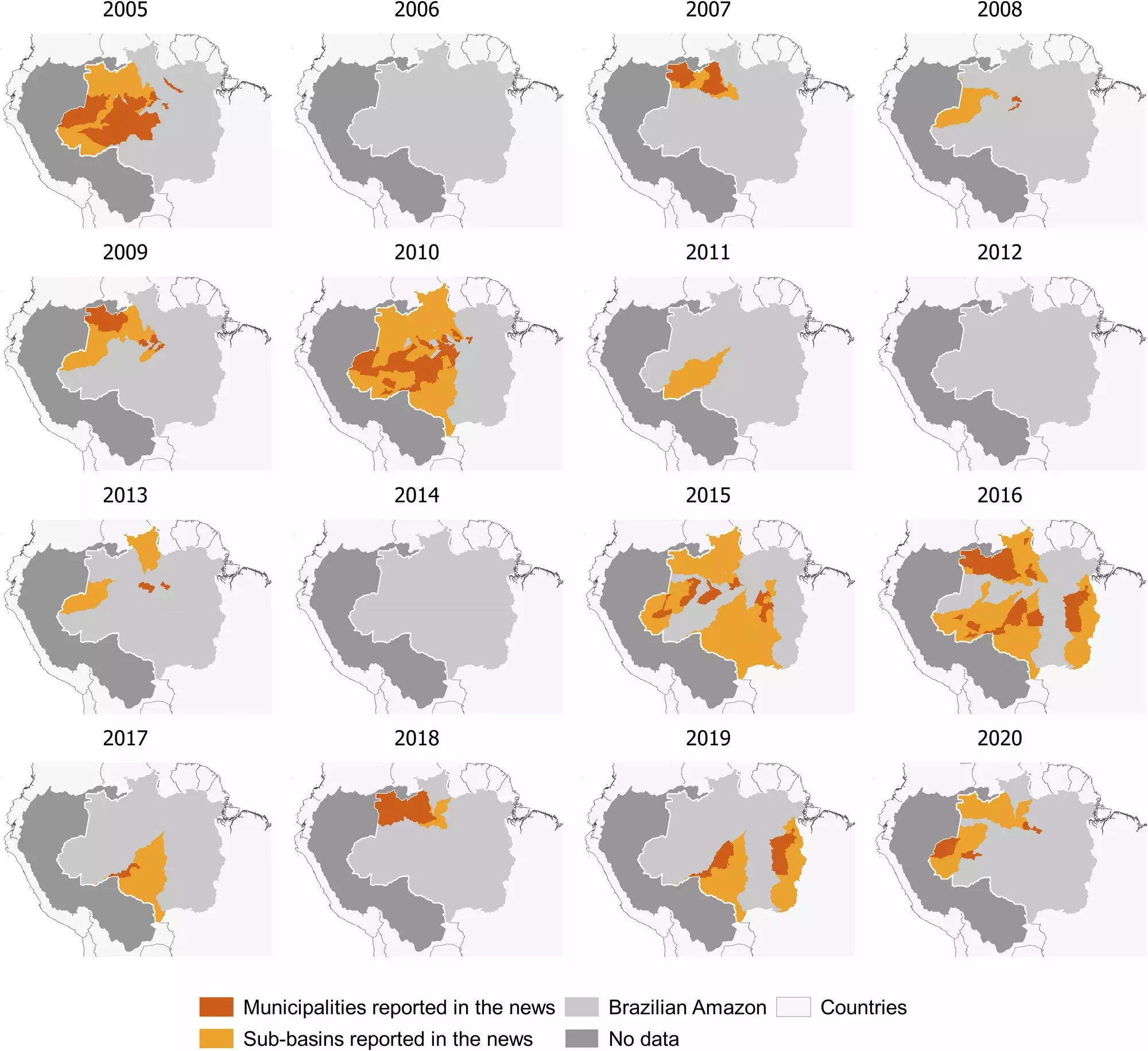The Amazon basin, often regarded as the lungs of our planet, is now gasping for breath amid intensifying drought conditions. Over the last two decades, the region has faced recurrent periods of low water levels, each lasting significantly longer than in previous years. This alarming trend is not merely an environmental issue; it is a crisis deeply intertwined with the lives of the local populace, particularly indigenous communities. Recent research led by Letícia Santos de Lima at the Institute of Environmental Science and Technology (ICTA-UAB) underscores an urgent reality: the drought’s implications stretch beyond mere water scarcity; they inflict profound socio-economic hardships on residents who depend on the river systems for their very survival.
The Human Cost of Climate Change: Isolation and Scarcity
With the Amazon’s waterways dwindling, an alarming statistic comes to light: almost half of the non-Indigenous settlements and over 54% of Indigenous villages in Brazil’s Amazon are now vulnerable to isolation during extreme droughts. These communities rely heavily on boats for transportation, a lifeline connecting them to essential resources, healthcare, and education. The increased frequency of drought events—most notably in 2005, 2010, and from 2015 to 2016—has transformed once-accessible routes into insurmountable barriers. The impacts are palpable: goods become scarce, fishing and hunting—sources of both protein and livelihood—are hindered, and access to urgent medical care is compromised. In effect, people are not only stripped of their means to thrive; they are pushed toward a survival mode that exacerbates poverty and marginalization.
The Illusion of Infrastructure: Roads vs. Rivers
In policy discussions surrounding this crisis, there is a temptation to propose infrastructural solutions, such as improving road networks. However, this perspective is fundamentally flawed. For one, roads have been historically linked to deforestation, which disrupts rainfall patterns and leads to sediment overflow in rivers, further diminishing navigability. The attempted solution only compounds the original problem, creating a vicious cycle. As Dr. Santos de Lima pointed out, effective response should not solely be reactive. It must embrace long-term adaptation strategies that align with local realities, ultimately supporting the viability of communities rather than dismantling their natural resources.
A Call for Long-Term Solutions in Crisis Response
The challenge of prolonged drought conditions necessitates a shift in governmental approach. Unfortunately, many responses remain temporally reactive, addressing immediate needs without considering the underlying systemic issues. Rather than a piecemeal approach, community-driven strategies are vital. These strategies must be informed by those who live in the Amazon—individuals who are uniquely positioned to articulate their needs and priorities. Engaging them in the policy-making process can promote more relevant responses that prioritize sustainability and community welfare over short-term fixes.
The Convergence of Science and Advocacy
The research conducted by Santos de Lima and her team utilizes an interdisciplinary approach, combining spatial analysis with hydrology and content evaluation. This methodology not only highlights the urgency of the situation but also illustrates a model for how scientific inquiry can intersect with activism. As climate change exacerbates water scarcity and social strife, it becomes paramount that scientists use their expertise not just to analyze data but to advocate for the often-unheard voices of the Amazonian people.
The reality is stark: The Amazon basin, once teeming with life and fluidity, is becoming a land of drought and isolation. As climate patterns shift, the fundamental fabric of these communities is at risk. The time has come for Earth’s inhabitants to rally, advocating not just for awareness but for actionable, community-focused policies that prioritize the well-being of both the land and its people. It is a challenging path ahead, but it is one echoed by the very heartbeat of the Amazon itself.


Leave a Reply